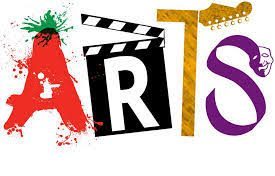This week’s experience opened my eyes to linking the arts to other areas within the curriculum, having confidence in mark-making, opening up a creative side and being able to explore pieces of art through other aspects of the expressive arts. Thus enabling me to add deeper meaning and individual stories to them.
Firstly, visual arts identified the way in which the arts explored interdisciplinary learning within a classroom, focusing on how literacy can be taught through the arts. Connecting together in class, I could pick out metaphors in a text, creating drawings over the words. This can assist the learning of literacy as this can relate visuals to the written word. Marshall (2014) identified ‘art integration while embracing art objectives, essentially utilizes multimodal arts-based learning to enhance comprehension of academic subjects.’
This focus shows the benefits of using art to linked learning, identifying how these subjects thrive from being learnt through arts. Shaw (2016) discussed in his ted talk how when we draw, we can remember more which can aid children in their academic learning in the way “utilising a multimodal arts-based learning to enhance the comprehension of academic subjects” (Marshall, 2014.)

Bloomfield (2012) as well discusses the ways children use their creative instincts to explore ideas and interpret information in new ways, helping children conceptualise and overcome an academic area they feel weak in.
Within our visual arts workshop, I felt the fun that children would have in art and also the belief and confidence it can give a child. As I discovered in the lecture about how if a child draws over writing they are more likely to remember more, I can also identify the common road-block being a child saying ‘I can’t draw,’ which I can relate to strongly. However, I discovered that from making a dot a child can begin to believe in their drawing ability, if you can write you can draw, you can make a mark and let the creative juices flow. The arts allow children to ‘celebrate multiple perspectives.’ As Eisner (2002) showed that ‘one of their large lessons is that there are many ways to see and interpret the world.’ From this dot as Eisner stated, many children would see it in multiple different forms, from the start of a butterfly to a bud of a flower. Children could make one small mark with the ink and then expand from there, giving them more feeling to say that they can draw and develop their artistic skills.

Children learn their own way to interpret a dot in their minds and create an image that they then add to. This workshop opened my eyes and even made me believe I could create multiple different images from this mark. See what you can do, what could you create from this dot below?


Moving onto the drama workshop, I still felt anxious, as it is still a piece of the arts I don’t have much experience or confidence with. This week was looking at five new conventions, thought tracking, still image, narration, flashback then flashforward.
With these conventions, we looked closer at a painting to create drama. The painting was Avril Patons ‘windows in the west,’ identified below.

With this painting, our minds could wander to what was going on beyond the windows, was there sad news or happy news, a party or a process of grieving. I was a bit reluctant at first as I don’t find myself that creative but as Csikszentmihalyi (2013) discussed creative surroundings can stimulate individuals, which is what the picture could elevate creativity in someone and facilitate interactions and a greater environment of ideas.
Creating these stories can be provoking to the child’s mind, as they begin to wonder through the thoughts and feelings and then expressing the emotions that these individuals were experiencing. It sparks difficult interactions of death and abuse to happy interactions such as birthdays and love. The children may not fully interact with the painting but once it comes to life a child can connect with it at a deeper level. As Benjamin Franklin put it ‘Tell me and I will forget, show me and I will remember, involve me and I will understand’
I use drama to explore real and imaginary situations, helping me to understand my world.
EXA 0-14a
Linking these two workshops together I see links in the visual art of an image and how we can perceive images. Whether it be a full painted picture or a dot made on a page. Our mind can connect with it and lead us to be creative, as I can see by the way ‘windows in the west’ was brought to life in the drama workshop and then the way a dot was added to through our minds. The way our thoughts have all identified different situations and events from still images and added detail and information, all adds dimension to our children and individuals in helping them relate to real life.

Referencing
- Education Scotland (n.d.) Curriculum for excellence: expressive arts Experiences and Outcomes [online] Available at: https://education.gov.scot/Documents/expressive-arts-eo.pdf[Accessed 12 Sep. 2019]
- Fleming, M (2012) The arts in education: An introduction to aesthetics, theory and pedagogy. London:Routledge
- How to draw to remember more – Graham shaw – TEDxVienna [online] available https://www.youtube.com/watch?time_continue=107&v=gj3ZnKlHqxI[accessed: 19/09/2019]
- Marshall, J. (2014) Transdisciplinarity And Art Integration: Toward A New Understanding Of Art-Based Learning Across The Curriculum, Studies in Art Education, 55:2, 104-127
- Eisner, E (2002) The Arts and the creation of mind New Haven CT: Yale University Press
- Csikszentmihalyi, M (2013) Creativity: The Psychology of Discovery and Invention New York:Harper Collins



